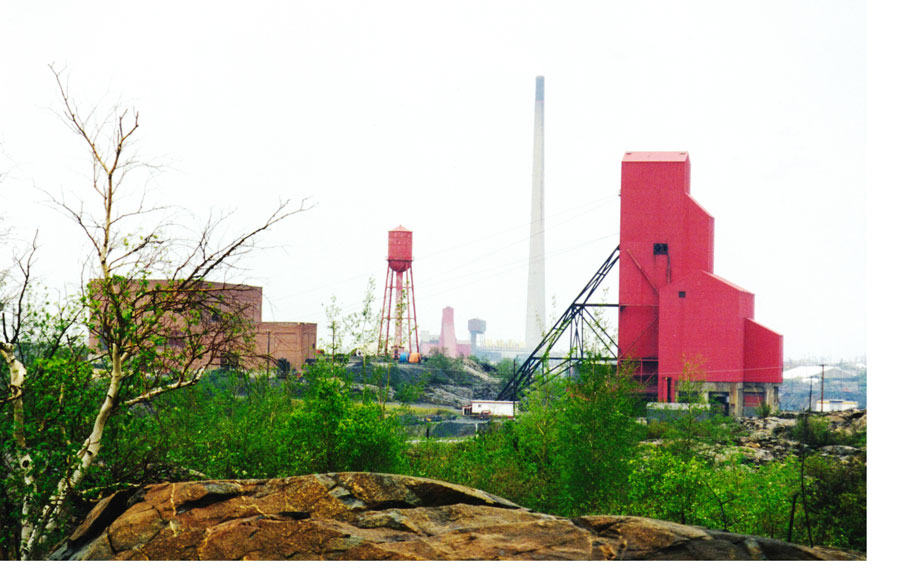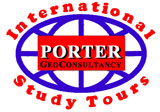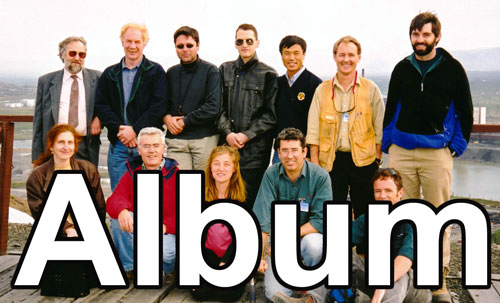| |||||||||||
|
Zinc '98 Zinc Deposits of Europe and North America 16 July - 17 August 1998 | |||||||||||
|
| |||||||||||

The Australian Mineral Foundation and Porter GeoConsultancy conducted a three module professional development course visiting fifteen of the world's most important zinc resources and mines. Deposits were selected in collaboration with a 'core group' of senior managers from Australia's major zinc producers and explorers, reflecting the deposits they would most like their staff to study.
It allowed a comparison between different settings, styles and ages of zinc deposits. The world's major zinc bearing deposits are found in a variety of settings including volcanic arcs, mobile belts, back-arc basins, passive margins, intra-cratonic rift basins and stable shelves. They are hosted by rocks ranging from intermediate to felsic volcanics, volcano-sedimentary successions, thick monotonous clastics, carbonates, intercalated clastics and carbonates, and even arenites, while large deposits are known for rocks ranging in age from Archaean to Mesozoic and Tertiary. The orebodies themselves vary from stratabound sheets and tabular bodies in shear zones, to transgressive accumulations and veins, to contorted masses and rods in high grade metamorphics. This tour provided the opportunity to see a cross section across the diversity of known major zinc deposits, to look for comparisons and contrasts, the common factors, and thereby gain an insight into the important criteria for discovery.
The three modules included the following: Module 1 - Europe, in Portugal, Spain and Ireland - 8 days from Thursday 16 to Friday 24 July, 1998 This module included a one day seminar in Dublin, Ireland, prior to the Irish visits, to provide an overview of the tectonics, geology and metallogeny of Europe, and Ireland in particular, with special reference to base metals. Presenters included experts from academia, consultants, industry and Geological surveys. In addition, briefings were given on the Pyrite Belt in southern Portugal and Spain, exploration in the Pyrite Belt and the geology and base metal mineralisation of Cantabria in northern Spain during visits to deposits in those countries. Deposits were visited in the following order: The Neves Corvo volcanic hosted massive sulphide deposit of the Iberian Pyrite belt, hosted within a Devonian to Lower Carboniferous volcano-sedimentary sequence in southern Portugal; the carbonate hosted Reocin deposit within the late Triassic-Jurassic to Cretaceous Basque-Cantabria Basin of northern Spain; the stratabound carbonate hosted Navan deposit, hosted by a shallow water Carboniferous clastic and carbonate succession within the Midlands Bbasin of Ireland; the carbonate hosted Lisheen deposit hosted by Lower Carboniferous carbonate rocks within the Rathdowney Trend in central Ireland; and the similarly carbonate hosted Galmoy deposit, also within lower Carboniferous carbonates of the Waulsortian Limestone on the Rathdowney Trend in central Ireland. Module 2 - North American Sediment-Hosted Deposits, in US and Canada, 10 days, from Monday 27 July to Wednesday 5 August, 1998 This module commenced with a one day workshop in Vancouver, British Columbia, led by experts from academia and geological surveys. Its aim was to provide a context to the deposits visited, and an overview of the tectonics, geology and metallogeny of the North American cordillera where all of the deposits to be visited are located. Deposits were visited in the following order: The stratabound, sediment hosted Sullivan pyrite-lead-zinc sulphide orebody that lies conformably near the top of the Mesoproterozoic Lower Aldridge Formation in southeastern British Columbia, Canada; The Coeur-Galena deposit complex at Coeur d'Alene in Idaho, USA. The complex comprises Late Proterozoic, narrow, rich, transgressive Pb Zn Ag Cu veins, or vein swarms with extensive lateral dimensions of hundreds to thousands of metres, but thicknesses of <1 to a few metres. Mineralisation is hosted by the Mesoproterozoic clastic rocks of the Belt Super Group, the US continuation of the Purcell Supergroup, that includes the Aldridge Formation, host to Sullivan; The stratabound, sediment hosted Red Dog, Aqqaluk Zn-Pb-Ag deposits hosted by a Carboniferous sequence of black siliceous shale and chert within the lower plates of a stack of eight imbricated and folded allochthonous thrust slices in the western Brooks Range of northern Alaska; The Faro-Anvil group of 7 stratabound Zn-Pb-Ag deposits distributed over a strike interval of 35 km, hosted by an up to 150 m thick, laterally discontinuous, graphitic phyllite unit within a thick Neoproterozoic to Ordovician sequence on the western margin of the Selwyn Basin in the Yukon Territory, Canada; The stratabound Howard's Pass Zn-Pb-Ag hosted by a sequence of pyritic carbonaceous shale, cherts and mudstones with minor carbonates in the lower section of the Mid Ordovician to Early Silurian Road River Group, on the eastern margin of the Selwyn Basin, some 200 km east of Faro in the NW Territories of Canada. Module 3 - North American Volcanic-Hosted Deposits, in US and Canada, 10 days, from Friday 7 July to Monday 17 August, 1998 This module included briefings by, and field reconnaissances with, local experts at a number of localities and most of the districts visited, to provide a context to the deposits visited, and an overview of the tectonics, geology and metallogeny of the surrounding region. Deposits were visited in the following order: The Flin Flon massive sulphide copper-zinc orebodies hosted by a Palaeo- to Mesoproterozoic volcanogenic sequence within the 1850 Ma Trans-Hudson Mobile Belt in Manitoba, Canada; The Kidd Creek massive sulphide Zn-Cu-Ag-Pb deposit, hosted by a suite of Archaean ~2.7 Ga felsic volcanics of the Abitibi Greenstone Belt, of the Superior Province, in the Timmins-Porcupine district of Onrtario, Canada; Bouchard-Hébert (Mobrun), NE of Rouyn-Noranda in Quebec, Canada, within the Abitibi Greenstone Belt of the Archaean Superior province, occurring as two gold rich poly-metallic Zn-Au-Cu-Ag complexes of conformable massive sulphides hosted by interbedded mafic-to-felsic submarine volcanic rocks; The Zn-Pb-Cu-Ag massive sulphide Brunswick #12 orebodies hosted by an Ordovician sequence of metamorphosed volcano-sedimentary rocks in the Appalachians of New Brunswick in eastern Canada; The Crandon massive sulphide Zn-Cu-Au-Ag deposit in Wisconsin, USA, hosted by andesitic to dacitic pyroclastics, flows and chemical sediments of the 1.86 to 1.82 Ga Penokean Mobile Belt. This study tour was planned, organised and managed by Porter GeoConsultancy as a professional development course on the curriculum of the Australian Mineral Foundation. | |||||||||||
| |||||||||||
|
| |||||||||||












